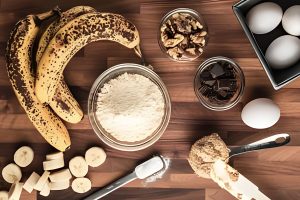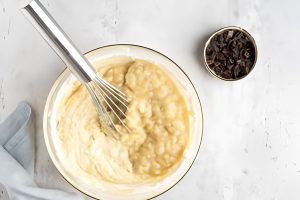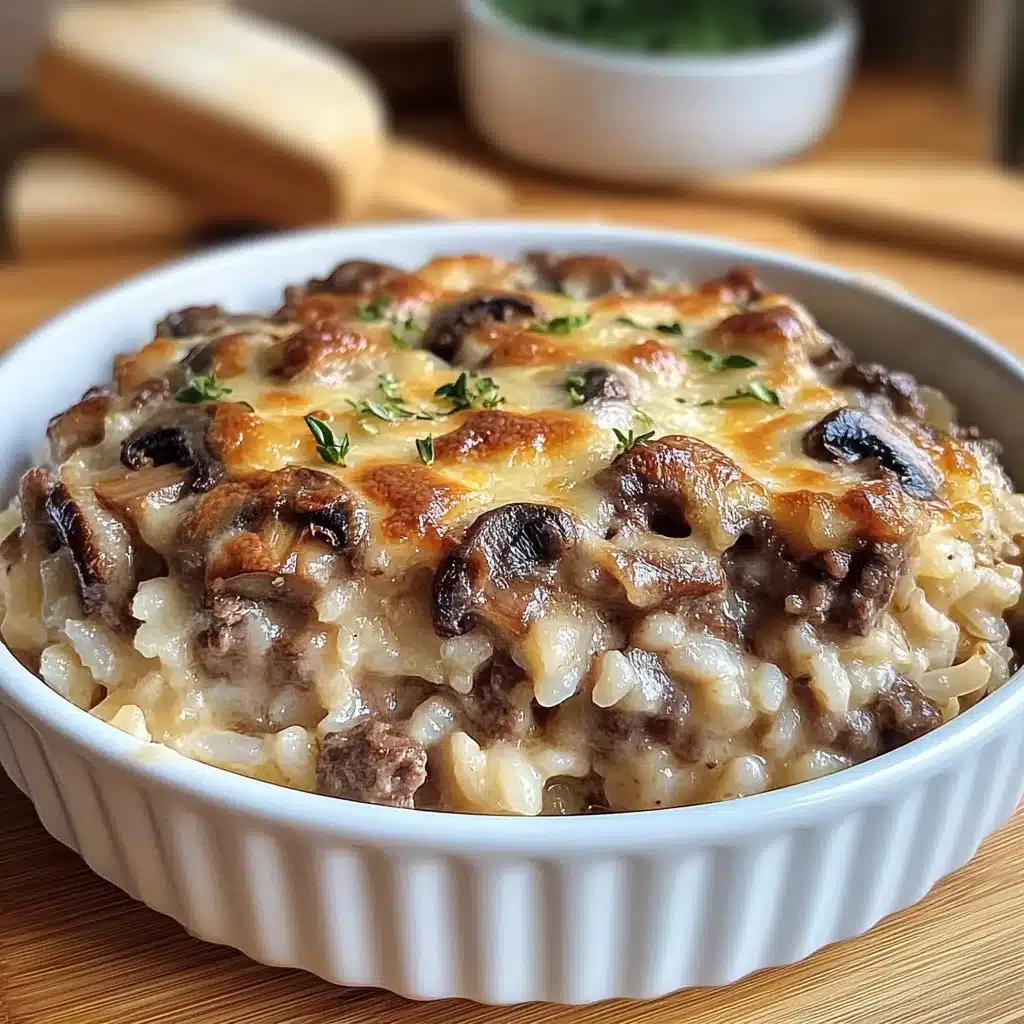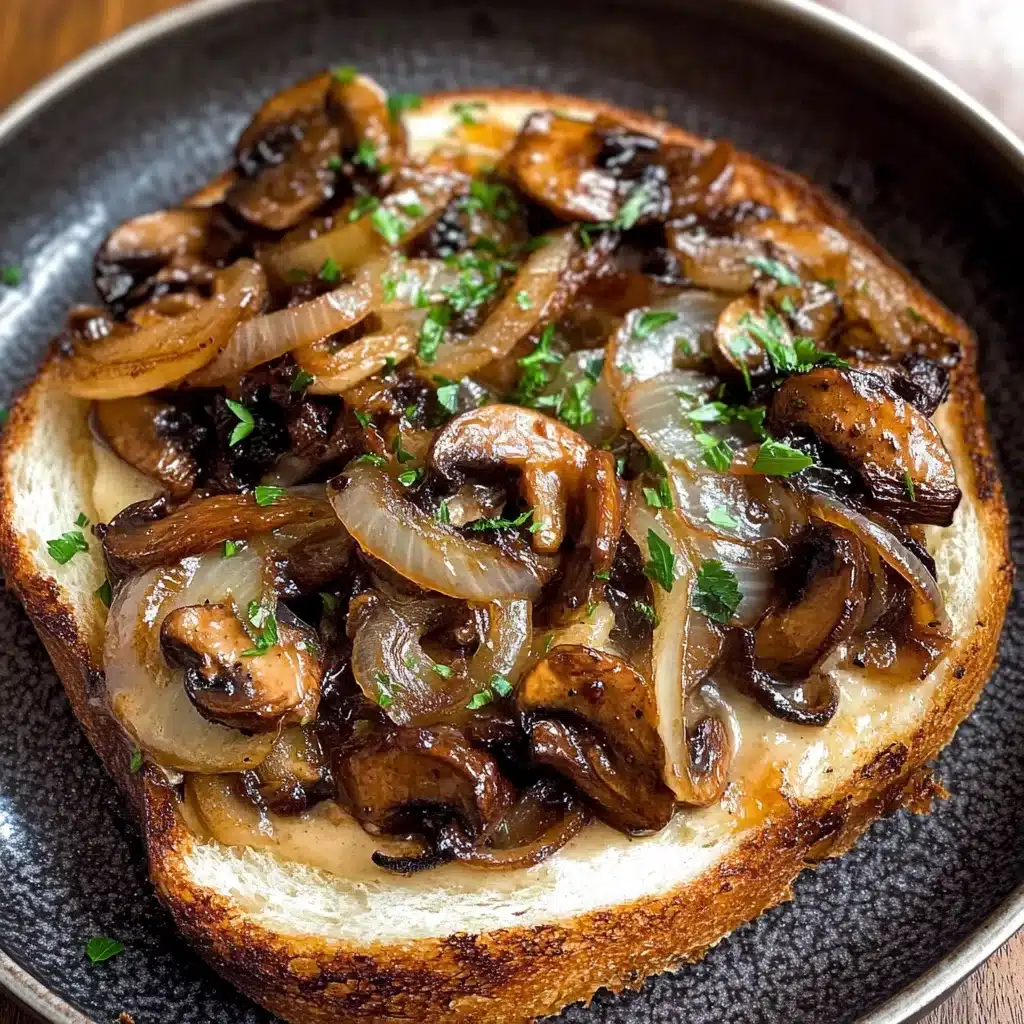Banana bread has always been a beloved treat, comforting and sweet, perfect for breakfast or a snack. But what if we could make it not just tasty but also a powerhouse of nutrition? Enter protein banana bread – a delightful twist on the classic recipe that incorporates protein powder, turning a simple pleasure into a nutritious snack or breakfast option.
Why Protein Matters in Your Diet
Protein is a building block of life, crucial for muscle repair, growth, and the overall functioning of our body. Incorporating protein into meals, including snacks and treats, can help keep you fuller for longer, aid in muscle recovery after workouts, and ensure your body gets the essential nutrients it needs. Protein banana bread not only satisfies your sweet tooth but also contributes positively to your dietary needs.
The Benefits of Banana in Baked Goods
Bananas are more than just a sweet, creamy fruit; they’re packed with vitamins, minerals, and fiber, making them an excellent addition to baked goods. In banana bread, they add natural sweetness, moisture, and a host of health benefits, from improved digestion to heart health support. The inclusion of bananas means that our protein banana bread is not only protein-rich but also full of the goodness of fruit.
Choosing the Right Protein Powder
The type of protein powder you choose can significantly affect the taste and texture of your banana bread. Whey protein is popular for its creamy texture and ability to blend well with other ingredients. However, plant-based options like pea or rice protein are excellent for those following a vegan diet. Flavor compatibility is key; a vanilla or unflavored protein powder tends to complement the banana’s natural sweetness without overpowering it.
Essential Ingredients for Protein Banana Bread
A perfect protein banana bread starts with the right balance of wet and dry ingredients. The wet ingredients usually include ripe bananas, eggs, milk, and oil or melted butter, providing moisture and binding the bread. The dry ingredients consist of flour, protein powder, baking powder, and spices like cinnamon. The precise measurements and combinations of these ingredients are crucial for a moist, flavorful bread that doesn’t compromise on texture.
Step-by-Step Baking Guide
Certainly! Here’s a detailed step-by-step guide to baking your own delicious and nutritious protein banana bread. This guide assumes you have the basic ingredients: ripe bananas, protein powder (of your choice), flour, sweetener, eggs, milk (dairy or non-dairy), baking powder, and any additional mix-ins you prefer (like nuts or chocolate chips).
Ingredients:
- 3 ripe bananas (the riper, the better for sweetness)
- ¾ cup protein powder (whey or plant-based, vanilla or unflavored)
- 1¾ cups all-purpose flour (or a gluten-free alternative)
- ½ cup sweetener (sugar, honey, maple syrup, or a sugar substitute)
- 2 large eggs
- ¼ cup milk (dairy or non-dairy)
- ¼ cup oil or melted butter
- 1 teaspoon baking powder
- Optional: ½ teaspoon of cinnamon, ½ cup nuts (walnuts, pecans), or chocolate chips
Equipment:
- Loaf pan (9×5 inch works well)
- Mixing bowls
- Fork or potato masher
- Whisk or electric mixer
- Measuring cups and spoons
- Spatula
- Toothpick or skewer (for testing doneness)
Instructions:
- Preheat the Oven and Prepare the Pan:
- Preheat your oven to 350°F (175°C).
- Grease your loaf pan with butter or non-stick spray, or line it with parchment paper.
- Mash the Bananas:
- Peel the bananas and place them in a large mixing bowl.
- Use a fork or potato masher to mash the bananas until smooth.
- Mix Wet Ingredients:
- To the mashed bananas, add the eggs, milk, and oil (or melted butter). If using honey or maple syrup as a sweetener, add it here as well.
- Whisk together until the mixture is well combined and smooth.
- Combine Dry Ingredients:
- In a separate bowl, sift together the flour, protein powder, baking powder, and any optional spices like cinnamon.
- If you’re using a granulated sweetener, mix it with the dry ingredients.
- Combine Wet and Dry Mixtures:
- Gradually add the dry ingredients to the wet ingredients, stirring until just combined. Avoid overmixing to prevent the bread from becoming tough.
- Add Optional Mix-Ins:
- If you’re adding nuts, chocolate chips, or any other mix-ins, fold them into the batter gently with a spatula.
- Pour Batter into the Pan:
- Transfer the batter to your prepared loaf pan, smoothing the top with a spatula.
- Bake:
- Place the loaf pan in the preheated oven.
- Bake for 50-60 minutes, or until a toothpick inserted into the center comes out clean or with a few moist crumbs attached.
- Place the loaf pan in the preheated oven.
- Cooling:
- Remove the bread from the oven and let it cool in the pan for about 10 minutes.
- After 10 minutes, turn the bread out onto a wire rack to cool completely. This prevents the bottom from becoming soggy.
- Serving:
- Once cooled, slice the bread with a serrated knife.
- Serve as is, or toast slices and enjoy with a spread of your choice.
Tips for Success:
- Banana Ripeness: The riper the bananas, the sweeter and more flavorful your bread will be.
- Mixing: When combining wet and dry ingredients, mix until just combined to keep the bread tender.
- Baking Time: Ovens vary, so start checking for doneness at the 50-minute mark.
- Storing: Keep the bread in an airtight container at room temperature for a few days, or wrap and freeze for longer storage.
Enjoy your homemade protein banana bread as a nutritious breakfast, snack, or post-workout treat!
Customizing Your Protein Banana Bread
One of the joys of baking is making a recipe your own. Protein banana bread is incredibly versatile. Add nuts or seeds for extra texture and nutrients, or play around with sweeteners like honey, maple syrup, or sugar alternatives for a different flavor profile. Gluten-free flours like almond or oat flour can also be used to make this treat accessible to those on gluten-free diets.
Protein Banana Bread for Different Diets
Adapting your protein banana bread recipe to fit various dietary needs allows everyone to enjoy this delicious treat regardless of their dietary restrictions or preferences. Whether you’re catering to gluten-free, vegan, low-carb, or high-protein diets, there’s a way to modify the classic protein banana bread to suit everyone’s needs. Here’s how to make protein banana bread for different diets:
Gluten-Free Protein Banana Bread
For those avoiding gluten, making a gluten-free protein banana bread is quite straightforward. Replace the all-purpose flour with a gluten-free flour blend. Look for a blend that’s designed to be a 1:1 substitute for wheat flour to ensure your bread has the right texture. Additionally, confirm that your protein powder is gluten-free, as some powders may contain gluten additives or be processed in facilities with gluten cross-contamination.
Vegan Protein Banana Bread
To make your banana bread vegan:
- Eggs: Replace each egg with a “flax egg” (1 tablespoon ground flaxseed mixed with 3 tablespoons water, let sit for 15 minutes) or a commercial egg replacer.
- Milk: Use any plant-based milk, such as almond, soy, or oat milk.
- Butter/Oil: Opt for coconut oil or a vegan butter. Ensure your protein powder is plant-based, such as pea, soy, or rice protein powder.
Low-Carb/Keto Protein Banana Bread
Creating a low-carb version of protein banana bread requires a few more adjustments:
- Flour: Substitute the all-purpose flour with almond flour or coconut flour. Note that coconut flour absorbs more liquid, so you may need to adjust the amount of milk or add an extra egg.
- Sweetener: Replace sugar with a low-carb sweetener like erythritol or monk fruit sweetener.
- Bananas: Although bananas are key to banana bread, they’re high in carbs. Use a minimal amount of mashed banana for flavor, or consider using banana extract instead to reduce carbs while keeping the banana flavor.
- Protein Powder: Choose a low-carb protein powder, such as whey isolate or a plant-based option that doesn’t contain added sugars.
High-Protein Banana Bread
To boost the protein content even further for those looking to increase their protein intake:
- Protein Powder: Increase the amount of protein powder. If doing so, you may need to adjust the amount of liquid in the recipe to ensure the batter doesn’t get too dry.
- Add-Ins: Incorporate high-protein mix-ins like chopped nuts, seeds (such as chia or hemp seeds), or even swirl in some Greek yogurt into the batter before baking.
General Tips for Dietary Adaptations:
- Experiment with Flavors: Don’t be afraid to add spices like cinnamon, nutmeg, or vanilla extract to enhance the flavor, especially when making substitutions that might affect the taste.
- Adjust Consistencies: When substituting ingredients, the batter’s consistency might change. Aim for a batter that’s thick yet pourable, similar to traditional banana bread batter. If too dry, add a bit more milk; if too wet, add a small amount of flour.
- Nutritional Balance: Keep in mind the overall nutritional balance of your banana bread, especially when making it suitable for specific diets. Consider the balance of macros (carbohydrates, proteins, and fats) and adjust according to your dietary goals.
By making these adjustments, you can create a delicious loaf of protein banana bread that meets a variety of dietary needs, ensuring everyone can enjoy this wholesome, comforting treat.
Storing and Serving Suggestions
Protein banana bread is as versatile in serving as it is in baking. Enjoy it toasted with a smear of peanut butter for an extra protein kick, or serve it alongside your favorite coffee or tea for a comforting snack. To keep it fresh, store the bread in an airtight container at room temperature for a few days, or wrap and freeze it for longer storage.
Common Mistakes and How to Avoid Them
The key to perfect protein banana bread lies in avoiding common baking pitfalls. Overmixing the batter can lead to a tough texture, while underbaking can result in a gummy center. Using bananas that aren’t ripe enough can diminish the bread’s sweetness and moisture. By following the recipe closely and keeping an eye on your bread as it bakes, you can avoid these common issues.
A Recipe That Welcomes Creativity
One of the joys of baking banana bread is the room for creativity it offers. From nuts and seeds to chocolate chips and dried fruit, the add-in possibilities are endless. For those looking to explore further, integrating ingredients like pumpkin can introduce a seasonal twist, while recipes like Earl Grey Cookies inspire the incorporation of unique flavors like tea into your baking endeavors.
FAQs About Protein Banana Bread
Can I use any type of protein powder in this recipe?
Absolutely! You can use any type of protein powder in your protein banana bread recipe, including whey, casein, soy, pea, or rice protein powders. Each type brings its unique flavor and nutritional profile. Whey protein is popular for its creamy texture and is a great option if you consume dairy. Plant-based proteins like pea or soy are excellent for vegans or those with dairy intolerances. Just remember that the flavor and texture might slightly vary depending on the protein powder used, so you might want to adjust the amount of liquid in the recipe to achieve the desired batter consistency.
How can I make my banana bread moist?
To ensure your banana bread remains moist, follow these tips:
- Use Overripe Bananas: The riper the bananas, the more moisture they’ll add to your bread. Look for bananas with lots of brown spots.
- Don’t Over-mix: Mix the batter just until the ingredients are combined. Over-mixing can lead to gluten development, making the bread tough.
- Add Yogurt or Applesauce: Incorporating a small amount of yogurt or applesauce can introduce additional moisture and create a tender crumb.
- Proper Storage: After baking, allow the bread to cool completely before wrapping it tightly in plastic wrap or storing it in an airtight container. This helps to lock in moisture.
Is protein banana bread gluten-free?
Protein banana bread can be made gluten-free by using gluten-free flour blends instead of regular all-purpose flour. Additionally, ensure that the protein powder you’re using is certified gluten-free, as some powders may contain gluten or be processed in facilities that handle gluten-containing products.
Can I freeze protein banana bread?
Yes, protein banana bread freezes exceptionally well. To freeze, wrap the cooled loaf or individual slices in plastic wrap, then place them in a zip-lock freezer bag or an airtight container. Label with the date, and freeze for up to 3 months. Thaw overnight in the refrigerator or at room temperature for a few hours before serving.
What can I substitute for eggs in this recipe?
For those looking to avoid eggs, there are several substitutes you can use in your banana bread recipe:
- Flaxseed or Chia Seeds: Mix 1 tablespoon of ground flaxseed or chia seeds with 3 tablespoons of water for each egg. Let it sit for a few minutes to thicken.
- Applesauce: Use ¼ cup of unsweetened applesauce to replace one egg. This also adds moisture to the bread.
- Banana: An additional ¼ cup of mashed banana can substitute for one egg, adding more banana flavor and moisture.
- Commercial Egg Replacer: Follow the instructions on the package for the equivalent of one egg.
How do I know when my banana bread is fully baked?
To test if your banana bread is fully baked, insert a toothpick or a cake tester into the center of the loaf. If it comes out clean or with a few moist crumbs (but no wet batter), your banana bread is done. The top should be golden brown, and the bread should start to pull away from the sides of the pan. Additionally, you can gently press the top of the bread; if it springs back, it’s likely done.
Conclusion: The Joy of Healthy Baking
Baking protein banana bread is a simple joy that yields delicious and nutritious results. Whether you’re a seasoned baker or new to the kitchen, this recipe offers the opportunity to indulge in a classic treat while also fueling your body with essential nutrients. Happy baking!
Sharing is caring!







